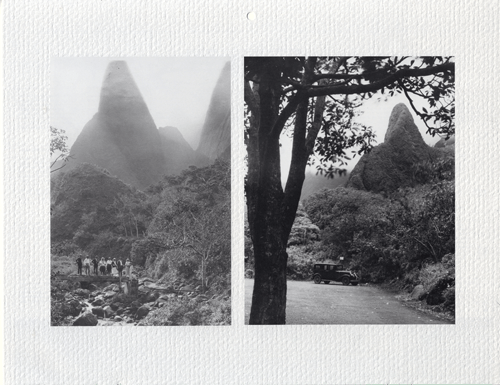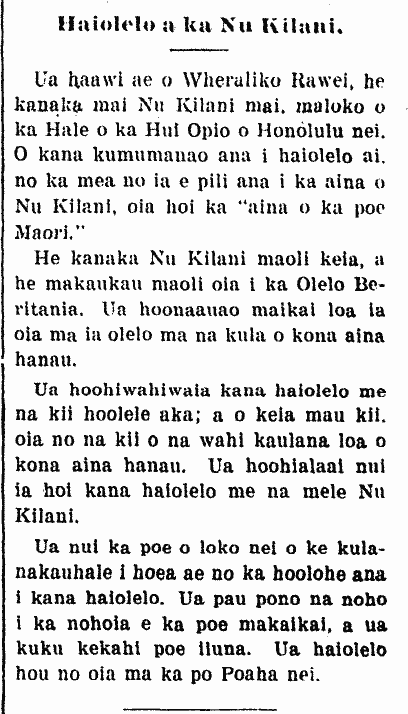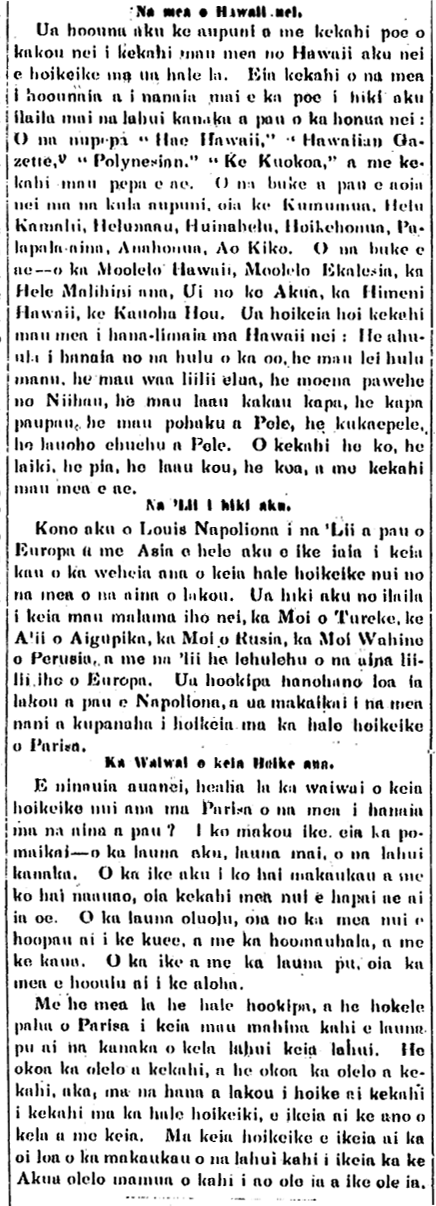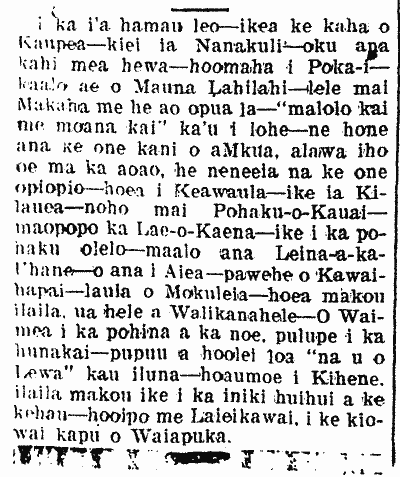NOTES OF THE WEEK.
Christmas—passed off in the good old fashioned style. The eve was ushered in by the assemblage, about 7 o’clock, of a large number of children and their parents at Washington Place, the Mansion of Mrs. Dominis, where Santa Claus had given out that he would hold his court, and distribute the gifts which he had ordered for the occasion. A magnificent “Christmas Tree” had been provided in one of the upper chambers, and the little folks, as they gathered about it with sparkling eyes and clattering tongues, found it all lighted up with candles, and the branches bending under the weight of gifts. Prompt as old father Time ever was, the bells were heard at the windows announcing:
“A miniature sleigh with eight tiny reindeer,
With a little old driver so lively and queer.” Continue reading









